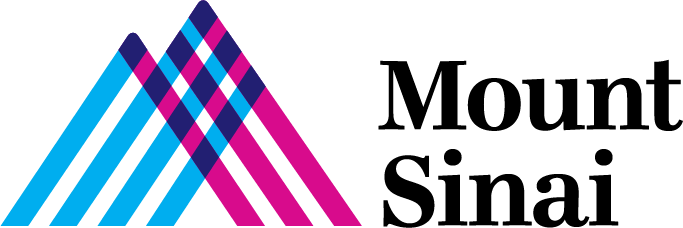
Q&A with Otto Angulo
Senior Director Digital Marketing
Mount Sinai Health System
As health systems face increasing pressure to deliver better care at a lower cost, many marketers are scrambling to demonstrate their return on investment (ROI) in healthcare. Simply generating leads no longer suffices. Healthcare marketing teams must understand and track the entire patient journey in order to gain leadership’s trust and develop highly efficient, highly lucrative campaigns.
The following Q&A with Otto Angulo covers some of the challenges all healthcare marketers are facing – from securing data to developing targeted campaigns, to demonstrating ROI on those campaigns. Then, Otto covers key strategies for combating those challenges and becoming a revenue powerhouse for the health system.
Given the current healthcare environment – including increased competition – how does Mount Sinai keep its patients engaged?
We generate a seamless experience for our patients while providing them with health education and awareness. I’ve found that retail healthcare is often focused on immediate care for immediate problems – a cough, fever, or COVID, for example. We differentiate ourselves by providing awareness and education on conditions or treatments that go beyond urgent care.
Of course, it's not just getting patients through the door. Once they’re through the door, we want to keep their loyalty. To do that, it’s important to get patients the right information, at the right point in the process. We use our CRM for insights and to drive engagement not just through one-off communications like appointment reminders, but through regular communications, such as our newsletter.

What strategies and channels have you found to be most effective for patient engagement?
It can vary depending on the type of campaigns we’re running. For example, we’ve found social media can be good for brand awareness. When we focus on conversions, display ads and search engine marketing (SEM) are critical. Part of our strategy includes specialized landing pages where consumers encounter a series of questions to help drive them to an action such as scheduling a particular type of appointment or entering an email to receive more health education.
We are now tracking leads from the very beginning, all the way through the patient journey. That way we can determine if we are generating revenue, and we can also see where patients are converting from. It's a constant journey, and we’re learning something new every day.
What has been your biggest challenge in showing ROI in healthcare marketing?

A huge challenge is limited resources and thus making sure we utilize our resources efficiently. Another challenge is consumer education and expertise. There's a knowledge curve for consumers to learn about health risks. For example, we may be getting leads with a particular campaign, but they may not be the right leads for the program or service line we are trying to promote.
How are your strategies different for new patient acquisition versus activating existing patients?
There is a continuous cycle with patient acquisition and patient activation. You might come to the hospital because you had a hip surgery but then later need care for another service, such as cardiology. Or maybe a family member has an issue. The journey never stops. In the lifecycle of a patient, usually someone that has lapsed for two years becomes a new patient again.
There are two kinds of journeys. There are existing patients we want to keep – with them, we have newsletters and other touchpoints like health and wellness education. We also have a health library on our website. Then, to attract new patients, we have various programmatic ads and social media ads that drive to specific landing pages with actions like appointment requests and health risk assessments. Once you’re in the system, we focus on how we can retain you as a patient and keep you happy.
We have intelligence that is capturing all of this, and we use that data to help us build personas. That way we can identify elements of personalization. If you come back to Mount Sinai, we can give you more of a personalized journey rather than a very broad one.

How do you help existing patients determine the next step in their care journeys?
Determining next steps for existing patients is something that we're starting to do more with our CRM. We can now add layers of health propensities that help us identify patients that could be at risk for certain health conditions.
That's part of our evolution – going from big campaigns, where we're targeting a big universe of patients, into targeting our existing patients. To do this, we have to collaborate with other departments like population health, for example.
CRM intelligence has given us the opportunity to bring back former patients and to understand how we can serve them better to gain their loyalty. That can be difficult, because in healthcare, people are loyal to their doctors. Patients often feel more connected to their doctors rather than the overall health system.

What metrics are you using to measure attribution and ROI in healthcare marketing?
In the past, it was a lot of guesswork. We were getting qualified leads, but we were not able to get to the next layer. Now we can follow the actual person all the way through their care journey and measure the resulting contribution margin.
Being able to show our ROI in healthcare marketing is important, because marketing has often been a hard sell in healthcare – it was never the priority. That’s why we partner with other teams like finance and strategy so that we can get access to data and determine the real cost of a person having a certain type of procedure and what our contribution margin is. We want to know that if we put money in the right places, we are going to get that money back. Then we can share that success. Our internal partners have really appreciated the work we’ve done on this.
Once we know which campaigns are successful, we work with our strategy partners to determine priority areas – in addition to the big priorities like orthopedics, cardio, and cancer. We can go into more niche areas and target patients for those services. We can get very granular with our targeting.
What advice would you give other healthcare marketers looking to be viewed as revenue generators, not cost centers?

There's this fear in healthcare that marketing strategies are going to get ‘hacked’. And that fear often comes from the top. To overcome that perception, work with your security teams to ensure that anyone with access to marketing data is a trusted, HIPAA-compliant source.
Second, define exactly what type of data you need and what it’s for. If you ask for the kitchen sink, you aren’t going to get anything. If you go to your internal partners prepared with exactly what you need in order to calculate attribution and ROI in healthcare marketing, it will open up the conversation.
Finally, always be upfront. Never let anything fall through the cracks. If an internal process is slowing you down, keep your leadership in sync with what you're doing and why you're doing it. Always keep your leadership aligned and in the loop with current strategies.
What's next on your radar for digital marketing at Mount Sinai?
We're becoming more efficient with our data. We're doing a big push to standardize how patients are added to the system. From there, it’s about how we use the data. We're going to start using models to further develop personalized, unique journeys and campaigns, and we are going to continue to evolve our reporting to tell the story and showcase our success.
Listen to the full Hello Healthcare podcast interview with Otto Angulo on your preferred streaming platform or watch the full video interview below.
About Otto Angulo
Otto Angulo is a marketing executive with over two decades of experience in marketing operations, digital marketing, and e-commerce. He has developed deep expertise in search engine marketing, online advertising, customer relationship management, and social media marketing. Otto has been with Mount Sinai Health System in New York City for two years. Connect with Otto Angulo on LinkedIn.

